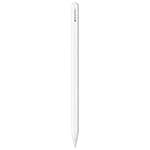Choosing the right video editing software can make or break your projects. When it comes to professional video editing, two titans stand out: Adobe Premiere Pro and Apple Final Cut Pro. Both software options offer powerful editing capabilities, but they differ significantly in performance, interface, and compatibility, making your choice dependent on your specific workflow needs and equipment.
Many editors find that Premiere Pro excels at collaboration and handling large projects, while Final Cut Pro is often better for quick turnaround on smaller projects. The speed difference is notable too, with tests showing Final Cut Pro can be up to five times faster than Premiere Pro for complex renders. Platform availability might settle the debate for some users—Premiere works on both Windows and Mac, while Final Cut Pro remains exclusive to Mac systems.
Premiere Pro vs Final Cut Pro: A Comprehensive Comparison Guide
Adobe Premiere Pro and Apple Final Cut Pro are two of the most popular professional video editing software used worldwide. Both offer powerful tools for video creators, but they differ in features, workflows, pricing, and platform compatibility. This guide will help you understand the key differences and decide which is best for your editing needs.
1. Platform Compatibility
- Premiere Pro: Available on both Windows and macOS.
- Final Cut Pro: Exclusive to macOS.
If you use a Windows PC, Premiere Pro is your only option between the two. Mac users can choose either.
2. User Interface and Workflow
- Premiere Pro:
- Traditional timeline-based editing.
- Highly customizable workspace.
- Supports multiple sequence timelines.
- Steeper learning curve but flexible for complex projects.
- Final Cut Pro:
- Magnetic Timeline that automatically snaps clips together.
- More streamlined and intuitive interface.
- Designed for faster editing with less manual adjustment.
- Better suited for beginners and fast-paced workflows.
3. Performance and Optimization
- Premiere Pro:
- Uses CPU and GPU acceleration.
- Performance varies depending on system specs.
- Supports many third-party plugins.
- Final Cut Pro:
- Optimized for Apple hardware and macOS.
- Excellent performance on Macs, including M1/M2 chips.
- Background rendering and faster export times.
4. Features and Capabilities
| Feature | Premiere Pro | Final Cut Pro |
|---|---|---|
| Multi-cam editing | Yes | Yes |
| 360-degree video editing | Yes | Yes |
| VR and AR support | Yes | Limited |
| Color grading tools | Advanced Lumetri Color Panel | Powerful Color Board and Wheels |
| Motion graphics | Integrates with Adobe After Effects | Built-in Motion app integration |
| Collaboration | Team Projects and cloud workflows | Limited collaboration tools |
5. Pricing Model
- Premiere Pro:
- Subscription-based via Adobe Creative Cloud.
- Costs around $20.99/month (single app) or part of the full Adobe suite.
- Requires ongoing payments.
- Final Cut Pro:
- One-time purchase of $299.99 from the Mac App Store.
- Free updates included.
- More cost-effective over time.
6. Integration with Other Software
- Premiere Pro:
- Seamless integration with Adobe Creative Cloud apps like After Effects, Photoshop, Audition.
- Ideal for users already in Adobe’s ecosystem.
- Final Cut Pro:
- Integrates well with Apple ecosystem apps like Motion and Compressor.
- Less integration outside Apple products.
7. Learning Curve and Community
- Premiere Pro:
- Larger user base and extensive tutorials.
- Used widely in professional film and TV production.
- Final Cut Pro:
- Easier for beginners to learn.
- Strong community among Mac users and indie creators.
Which One Should You Choose?
| Use Case | Recommended Software |
|---|---|
| Windows users | Adobe Premiere Pro |
| Mac users seeking speed & ease | Final Cut Pro |
| Integration with Adobe apps | Premiere Pro |
| One-time purchase preferred | Final Cut Pro |
| Complex, collaborative projects | Premiere Pro |
| Fast, intuitive editing | Final Cut Pro |
Conclusion
Both Premiere Pro and Final Cut Pro are powerful video editing tools with unique strengths. Premiere Pro offers cross-platform flexibility, deep Adobe ecosystem integration, and advanced features suited for complex workflows. Final Cut Pro shines on Mac with optimized performance, a user-friendly interface, and a one-time purchase model.
Your choice depends on your platform, budget, workflow preferences, and project requirements. Consider trying trial versions to see which fits your style best.
Key Takeaways
- Final Cut Pro offers faster rendering speeds but is limited to Mac users, while Premiere Pro works on both Mac and Windows.
- Premiere Pro provides better collaboration tools for team projects, while Final Cut Pro excels at quick-turnaround individual work.
- Both programs offer professional color grading tools, but they differ in plugin support and subscription models.
Overview of Video Editing Software
Video editing software has become essential for creating professional-quality content. These tools allow editors to transform raw footage into polished videos with effects, transitions, and audio enhancements.
Significance in Post-Production
Video editing software serves as the backbone of post-production workflows. It enables editors to organize footage, cut scenes, and build stories from raw materials. Without these tools, creating professional videos would be nearly impossible.
Modern editing software has significantly reduced the time needed to complete projects. Tasks that once required expensive hardware can now be done on standard computers.
The impact of good editing software extends beyond technical capability. It allows creative freedom and expression that shapes the final product. Many YouTube channels, indie films, and commercials owe their success to accessible editing tools.
For beginners and professionals alike, the right software can make learning easier and workflows smoother. Companies often look for editors skilled in industry-standard programs.
Key Features for Professional Video Editors
Professional video editors need specific features to work efficiently. The most important include:
- Timeline Editing: Intuitive interfaces where clips can be arranged, trimmed, and manipulated
- Multi-camera Support: Ability to sync and switch between multiple camera angles
- Color Grading Tools: Options to adjust colors, contrast, and apply looks to footage
- Audio Editing: Features for adjusting sound levels, removing noise, and adding effects
Advanced editing capabilities often include motion graphics, visual effects, and title creation. Both Adobe Premiere Pro and Apple Final Cut Pro offer these features but with different approaches.
Export options are crucial for delivering final projects. Professional software must support various formats, resolutions, and compression settings to meet client requirements.
Plugin support extends functionality beyond built-in tools. Final Cut Pro has fewer plugins than Premiere Pro, which may affect advanced workflows.
Comparing User Experience and Interface
The user interface and workflow design significantly impact editing efficiency and satisfaction when choosing between Adobe Premiere Pro and Apple Final Cut Pro. These industry-leading software options take different approaches to how editors interact with their tools.
User Interface (UI) Design
Adobe Premiere Pro features a traditional, panel-based interface that many video editors find familiar. The workspace is highly customizable, allowing users to arrange panels based on their preferences. The UI has been criticized as looking somewhat dated compared to its competitor.
Final Cut Pro takes a more modern approach with a cleaner, more elegant and refined UI. It uses a magnetic timeline and a simplified workspace that reduces clutter. The interface relies on a single-window design that keeps all tools readily accessible.
Colors and contrast in Final Cut Pro are designed for extended editing sessions, reducing eye strain. Premiere Pro offers darker themes that many editors prefer for long work periods.
Ease of Use and Learning Curve
Premiere Pro follows convention with its timeline-based editing approach. New users from other editing platforms often adapt quickly to its familiar layout. The software includes helpful tutorials and extensive documentation.
Final Cut Pro’s magnetic timeline represents a departure from traditional editing methods. New users might need time to adjust to this different approach. However, many editors report that once learned, it becomes highly intuitive.
Keyboard shortcuts in both programs can be customized, but Final Cut Pro’s default shortcuts are often praised for their logical arrangement. Premiere Pro benefits from consistency with other Adobe products, making it easier for users familiar with the Adobe ecosystem.
Workflow Efficiency
Final Cut Pro excels in rendering speed and real-time playback performance. Many editors note that its UI design contributes significantly to faster editing. The magnetic timeline helps organize clips efficiently without track management.
Premiere Pro offers better integration with other software. Its workflow is more traditional, with users creating projects and saving as they work. The track-based timeline gives precise control over element placement.
Batch processing capabilities differ between the two. Final Cut Pro handles background rendering automatically, while Premiere Pro requires more manual intervention for render management.
Project organization tools vary significantly. Final Cut Pro uses keywords and smart collections, while Premiere Pro relies on bins and nested sequences to manage complex projects.
System and OS Compatibility
When choosing between Premiere Pro and Final Cut Pro, understanding their system requirements and operating system compatibility is crucial for making the right decision. Each software has distinct hardware needs and platform limitations that will affect your editing workflow.
Minimum System Requirements
Premiere Pro needs somewhat powerful hardware to run smoothly. On Windows, it requires at least an Intel 6th Generation or newer CPU, 8GB RAM (though 16GB is recommended), and 8GB of hard disk space for installation. For Mac users, Premiere Pro works with macOS v10.15 (Catalina) or later, and supports both Intel and Apple Silicon processors.
Final Cut Pro has different requirements. It only runs on Macs with macOS 11.5.1 or later. It needs 4GB RAM as a minimum, but 8GB is recommended for 4K editing. The software requires about 4GB of disk space for installation.
Both programs benefit greatly from dedicated graphics cards. Video editing is GPU-intensive, especially when working with effects and high-resolution footage.
MacOS vs Windows Compatibility
The biggest difference between these editors is platform availability. Final Cut Pro is only available for macOS, making it exclusively an Apple product. This limitation means Windows users have no access to this software.
Premiere Pro works on both Windows and macOS systems, offering identical features across platforms. This cross-platform compatibility is a major advantage for teams with mixed operating systems or for editors who might switch between Windows and Mac.
For professionals working in multi-system environments or collaborating with others using different operating systems, Premiere Pro provides more flexibility. Content created in Premiere Pro can be opened and edited on either OS without conversion issues.
Support for MacBook Pro and iMac
On MacBook Pro systems, Final Cut Pro shows exceptional performance. It’s specifically optimized for Apple hardware, especially the newer M1 and M2 chip models. Users with M1 MacBook Pros report Final Cut Pro running much faster than Premiere, with render times approximately 5 times quicker.
Premiere Pro works well on MacBook Pros too, but often doesn’t match Final Cut’s optimization. Adobe has improved support for Apple Silicon, but performance tests show it still lags behind Final Cut Pro on the same hardware.
For iMac users, both programs perform admirably. The extra power and cooling in desktop systems benefits both applications. Final Cut Pro takes advantage of the Apple ecosystem integration, offering smoother playback and faster exports on iMacs compared to Premiere Pro on the same machine.
Battery life is another consideration for MacBook users. Final Cut Pro typically consumes less power, allowing for longer editing sessions when unplugged.
Supported Formats and Camera Compatibility
Both Premiere Pro and Final Cut Pro work with many video and audio formats, but they have different strengths. Your choice might depend on what cameras you use and what file types you need to work with.
Format Support and File Formats
Premiere Pro offers wide format compatibility, making it versatile for various projects. It supports popular VST3 plugin formats for audio editing. The software handles most standard video formats like MP4, MOV, and AVI.
Adobe keeps Premiere Pro updated to work with the latest broadcast formats. This helps editors stay current with industry standards.
Final Cut Pro also supports common formats but works best in the Apple ecosystem. It excels with ProRes files, Apple’s professional video format.
Some users report issues with certain formats in both programs. Reddit discussions show that editors sometimes struggle to find compatible file types for both FCPX and Premiere Pro.
Camera Formats and Video Formats
Both editing programs support major camera brands. They can import footage from:
- Canon
- Sony
- Panasonic
- ARRI
- RED
Final Cut Pro handles native formats from all major video camera makers, making it convenient for professional videographers. It processes RED and ARRI footage efficiently.
Premiere Pro matches this capability, working with RAW camera formats from professional systems. It handles 4K, 8K, and VR footage with proper hardware.
The main difference lies in processing speed. Final Cut Pro often renders camera-specific formats faster thanks to tight integration with macOS. Premiere Pro offers more flexibility but might require more powerful hardware for smooth editing.
Pricing Structure and Licensing
When choosing between Premiere Pro and Final Cut Pro, understanding their pricing models is essential for making the right investment. The two platforms offer fundamentally different approaches to licensing that impact both short-term budgets and long-term costs.
Subscription Model vs One-Time Purchase
Adobe Premiere Pro uses a subscription-based model that requires ongoing payments. Users must pay around $20/month to use the software. This means access to Premiere Pro stops if payments end.
Final Cut Pro, on the other hand, offers a one-time payment option. After paying once, users own the software forever. This includes all future updates and new features.
For many video editors, this difference in payment structure is a key factor in their decision. Short-term projects might benefit from Premiere’s monthly option, while long-term users often save money with Final Cut Pro.
Adobe Creative Cloud and Final Cut Pro X Pricing
Adobe Premiere Pro is part of Creative Cloud, which costs about $20-25 monthly for just Premiere or $50-60 monthly for all Adobe apps. This adds up to $240-300 per year for just the video editor.
Final Cut Pro X costs $299.99 in the US or £249.99 in the UK as a one-time purchase. This price includes all future updates with no renewal fees.
For those using other Adobe products, the complete Creative Cloud package might offer better value. However, standalone video editors often find Final Cut Pro’s pricing more attractive over time.
Cost Considerations for Professionals and Beginners
Beginners often struggle with high upfront costs. Premiere Pro’s monthly payment allows new editors to start with a smaller investment. They can also cancel when not working on projects.
Professional editors who use software daily face different math. After 15 months, the cost of Premiere Pro subscriptions exceeds Final Cut Pro’s one-time fee. At first glance, Premiere seems cheaper, but long-term users pay significantly more.
Cost comparison over time:
| Time period | Premiere Pro (at $20/month) | Final Cut Pro |
|---|---|---|
| 1 year | $240 | $299.99 |
| 2 years | $480 | $299.99 |
| 5 years | $1,200 | $299.99 |
Teams and studios must also consider the total number of licenses needed, as costs multiply with each editor.
Editing Capabilities and Tools
Both Premiere Pro and Final Cut Pro offer powerful editing tools, but they approach the task differently. Each software has unique strengths in timeline management, color adjustments, audio controls, and special effects capabilities.
Timeline and Magnetic Timeline Editing
Premiere Pro uses a traditional track-based timeline where clips stay where you place them. This gives editors complete control over clip placement and makes it familiar for those coming from other editing platforms. The timeline supports multiple video and audio tracks that can be locked, hidden, or reorganized.
Final Cut Pro takes a different approach with its Magnetic Timeline, which automatically shifts clips to prevent gaps or overlaps. This connected clip system helps maintain synchronization and speeds up the editing process for many users.
The magnetic approach in Final Cut Pro also includes features like compound clips and connected storylines that keep related elements organized. Many editors find this reduces the time spent managing tracks.
Premiere Pro excels with its customizable timeline views and keyboard shortcuts, allowing editors to tailor the interface to their workflow needs.
Color Grading and Correction Tools
Premiere Pro includes the Lumetri Color panel with professional color grading tools. It offers basic and advanced options including curves, HSL secondaries, and creative looks. The software integrates with other Adobe apps like After Effects for more complex color work.
Final Cut Pro provides powerful color grading tools that many find more intuitive. Its color wheels, curves, and color board make quick adjustments easy, while advanced options support more detailed work.
Both programs offer:
- Primary color correction
- Secondary color adjustments
- LUT support
- Scopes for precise monitoring
Final Cut Pro’s color tools are built directly into the interface with real-time feedback, making color grading feel smoother. Premiere Pro’s Lumetri panel provides more technical control but might require more steps to achieve similar results.
Audio Editing and Mixing Features
Premiere Pro features a dedicated audio mixer panel similar to professional audio workstations. It supports VST plugins, track automation, and multi-channel audio editing. The integration with Adobe Audition adds powerful restoration and editing capabilities.
Final Cut Pro handles audio with roles, which automatically organize and color-code different audio types. This makes managing dialogue, music, and effects simpler. The built-in noise reduction and audio enhancement tools work in real-time.
Key audio features in both include:
- Keyframe automation
- EQ and compression tools
- Audio ducking
- Surround sound mixing
Final Cut Pro’s audio syncing is notably fast and accurate. Premiere Pro offers more technical control through its track-based mixing board and sends/receives system for complex routing.
Advanced Editing and Special Effects
Premiere Pro shines with its extensive special effects capabilities and deep integration with After Effects. The Essential Graphics panel makes creating titles and motion graphics straightforward, while the effect controls panel offers detailed adjustments.
Final Cut Pro includes built-in effects that render quickly thanks to its optimization for Mac hardware. Its motion templates and 3D titles are particularly strong. The software also handles 360° video editing with specialized tools and effects.
Both programs support:
- Chroma key compositing
- Motion tracking
- Transitions and filters
- Speed ramping
Premiere Pro’s strength lies in its ecosystem, letting editors easily move projects between Adobe apps. Final Cut Pro emphasizes performance, with effects often rendering faster even on less powerful Mac computers.
Performance and Rendering
Final Cut Pro and Adobe Premiere Pro show major differences in how fast they process videos and how stable they are during editing. These differences can impact your workflow and final output quality.
Rendering Speed and Quality
Final Cut Pro X clearly outperforms Adobe Premiere Pro in rendering tasks. Tests show that FCP X is simply much faster when stabilizing, rendering, and exporting video projects.
In head-to-head comparisons, Final Cut Pro demonstrated significant speed advantages. One test found that performance improved by 23-27% in rendering and exporting tasks when using Final Cut Pro compared to Premiere.
The quality difference is also notable. Premiere Pro exports have been described as blockier and less detailed with less accurate colors when compared to Final Cut Pro at similar settings.
Real-Time Performance and Stability
Final Cut Pro starts rendering videos as you work, while Premiere Pro typically waits until you finish before processing. This background rendering in FCP helps maintain smoother playback during editing.
Many editors report that Final Cut Pro feels more responsive during complex editing tasks. The software rarely lags even with multiple effects applied, giving editors a more fluid experience.
Users often find Final Cut Pro more stable with fewer crashes during long editing sessions. This stability becomes crucial for professional workflows where time is valuable and deadlines are tight.
While Premiere Pro offers a sufficient workflow, many professionals switch to Final Cut Pro specifically for the speed and stability benefits when handling large or complex projects.
Integration and Additional Features
Both Premiere Pro and Final Cut Pro offer powerful integration options and extra features that can significantly improve your workflow. The way these programs connect with other software and their built-in resources can make a big difference in your editing process.
Adobe Creative Cloud Integrations
Premiere Pro’s main advantage is its seamless connection with other Adobe Creative Cloud apps. Editors can easily move between Premiere Pro and After Effects for motion graphics or Photoshop for image editing without leaving the Adobe ecosystem. This integration with Adobe’s suite creates a smoother workflow when working on complex projects.
You can directly import Photoshop files with layers intact or send sequences to After Effects with Dynamic Link – no rendering needed. This saves time and preserves quality throughout your editing process.
For teams, Adobe’s collaboration features let multiple editors work on the same project simultaneously. This makes Premiere Pro particularly strong for professional environments where teamwork is essential.
The Creative Cloud also includes Adobe Audition for advanced audio editing, giving editors professional sound tools without switching to third-party software.
iMovie Integration with Final Cut Pro
Final Cut Pro offers excellent integration with Apple’s beginner-friendly iMovie. This creates a natural upgrade path for Apple users starting with simpler projects.
Projects created in iMovie can be imported directly into Final Cut Pro, preserving edits, transitions, and basic effects. This makes it easy for new editors to grow their skills without starting over when they’re ready for more advanced tools.
The shared design language between the two programs helps make the transition smooth. Many basic functions work similarly, reducing the learning curve.
Both programs also take advantage of Apple hardware optimization. This means faster performance on Mac computers, especially those with Apple Silicon chips.
iMovie serves as a good training ground before moving to Final Cut Pro’s more professional features and timeline-based workflow.
Audio and VFX Effects Libraries
Both editing platforms come with extensive audio and visual effects libraries, but they differ in approach and specialization.
Final Cut Pro includes a robust collection of built-in effects and transitions that are optimized for performance. Its audio handling is particularly strong, with tools that make basic sound editing simpler than in Premiere.
Premiere Pro offers Auto Reframe, Color Match, and Auto Ducking features for better control and faster workflows. It also connects to Adobe Stock for additional assets.
For VFX, Premiere’s integration with After Effects gives it an edge for complex visual effects work. However, Final Cut Pro’s Motion companion app provides powerful motion graphics capabilities specifically designed for video editors.
Both programs support third-party plugins and effects, though Premiere has a larger ecosystem of compatible additions from various developers.
Final Cut Pro vs Adobe Premiere Pro: In-Depth Comparison
Both Final Cut Pro and Adobe Premiere Pro offer powerful video editing capabilities with distinct strengths and workflows that appeal to different types of video creators.
Non-Linear Video Editing Comparison
Final Cut Pro and Premiere Pro handle the editing process differently. Final Cut Pro uses a magnetic timeline that helps keep clips in sync. This makes editing faster for beginners and those who need quick turnarounds.
Premiere Pro uses a track-based system that gives editors more manual control. This traditional approach works well for complex projects where precise placement matters.
Performance is another key difference. Final Cut Pro is 5X faster than Premiere for complex renders. Even on Apple Silicon machines, Final Cut maintains a speed advantage, though the gap narrows.
The interfaces also differ significantly. Final Cut Pro has a cleaner, more streamlined look. Premiere Pro offers more tools visible at once but can feel cluttered to new users.
Pros and Cons for Each Software
Final Cut Pro
Pros:
- Faster rendering and export times
- Smoother playback of high-resolution footage
- One-time purchase ($299)
- Optimized for Mac hardware
- Better for quick turnaround projects
Cons:
- Mac only
- Limited plugin support compared to Premiere
- Less common in professional studios
- Steeper learning curve for traditional editors
Adobe Premiere Pro
Pros:
- Works on both Mac and Windows
- Integrates with other Adobe apps
- Larger plugin ecosystem
- Industry standard in many professional settings
- Better for collaboration on large projects
Cons:
- Subscription model ($20.99/month)
- Often slower performance
- More prone to crashes
- Can feel bloated with features
Choosing the Right Software for Your Needs
Your project type should guide your choice. For solo creators making shorter videos with quick turnarounds, Final Cut Pro often works better. Its speed advantages and one-time cost make it appealing for YouTubers and independent filmmakers.
Premiere Pro shines in team environments. Its cross-platform support and integration with other Adobe apps make it ideal for larger production teams. If you work with clients who expect Adobe project files, Premiere may be necessary.
Consider your hardware too. If you use a Mac, especially with Apple Silicon, Final Cut Pro performs significantly better. Windows users have no choice but Premiere Pro.
Budget matters as well. Final Cut’s one-time cost saves money for long-term users, while Premiere’s subscription might cost less for short-term projects.
Industry Use Cases and Expert Opinions
Both editing platforms have carved out their own niches in professional video production. Industry professionals choose between them based on specific project needs, team workflows, and personal preferences.
Professional Editing Uses
Adobe Premiere Pro dominates in many TV and film production environments. Its integration with other Adobe Creative Cloud apps makes it ideal for complex projects requiring motion graphics and visual effects. Many Hollywood studios rely on Premiere Pro for its collaborative features and compatibility with various camera formats.
Final Cut Pro shines in fast-turnaround environments like news production and documentary filmmaking. Its speed and efficiency help editors meet tight deadlines. The magnetic timeline and background rendering make it popular for event videography and corporate video production.
For commercial work, the choice often depends on client preferences. Ad agencies typically favor Premiere Pro due to its prevalence in the industry, while independent filmmakers may prefer Final Cut Pro’s one-time purchase model.
Testimonials from Industry Experts
Professional editors consistently note performance differences between the platforms. Many report that Final Cut Pro performs better than Premiere Pro on equivalent hardware. This performance gap becomes critical during tight deadline projects.
“Final Cut Pro is more versatile for certain creative tasks,” notes one expert on Quora, though they add that Premiere Pro offers advantages for high-quality video production. This balanced perspective reflects the nuanced choices professionals make.
Editors at small production houses often cite Final Cut Pro’s speed but lament its limited plugin support compared to Premiere Pro. Meanwhile, editors at larger studios appreciate Premiere Pro’s deeper integration with post-production workflows despite its heavier system requirements.
Access and Availability
Both Final Cut Pro and Adobe Premiere Pro have different ways you can get them and use them. Your choice may depend on your computer type, how long you need the software, and how you want to store your projects.
Free Trial Options
Final Cut Pro offers a 90-day free trial that gives users full access to all features. This generous trial period allows editors to work on multiple projects before deciding to purchase.
Adobe Premiere Pro provides a 7-day free trial with complete functionality. While shorter than Final Cut’s trial, it gives enough time to test basic features and workflow.
Neither trial requires credit card information to start, but both need an account creation.
Final Cut’s longer trial is ideal for project-based editors who need temporary access. Premiere’s shorter trial works better for those who already know they’ll likely subscribe.
Both trials include updates during the trial period and access to tutorials and support.
Availability on Network Storage and Cloud Services
Final Cut Pro works with network storage but has some limitations. It performs best with local storage but can connect to NAS (Network Attached Storage) devices when properly configured.
Users can store Final Cut libraries on network drives, but Apple recommends keeping current project files locally for best performance. Final Cut offers iCloud integration for smaller projects.
Premiere Pro has stronger network storage capabilities, supporting a wider range of shared storage solutions. Teams can work simultaneously on projects stored on network drives.
Adobe’s Creative Cloud storage allows for seamless project sharing between team members. This makes Premiere better suited for collaborative environments.
Both programs support automatic backup to network locations, but Premiere’s integration with cloud services is more extensive and flexible.
Technical Support and Resources
Both Premiere Pro and Final Cut Pro offer different kinds of help when you run into problems. Let’s look at what each one provides.
Adobe Premiere Pro Support Options:
- 24/7 chat support with Adobe representatives
- Phone support during business hours
- Extensive online documentation and tutorials
- Active community forums with quick responses
- Regular software updates and bug fixes
Adobe’s subscription model includes access to all these support channels. This means you never have to pay extra when you need help with Premiere Pro.
Final Cut Pro Support Options:
- Apple Support via chat, phone, and email
- AppleCare options for extended support
- Smaller plugin library compared to Premiere
- Apple Store Genius Bar in-person help
- Community forums and user groups
FCP uses a one-time payment model, which means basic support is included but premium help might cost extra.
Learning Resources Comparison:
| Resource Type | Premiere Pro | Final Cut Pro |
|---|---|---|
| Official Tutorials | Very extensive | Good selection |
| Third-party Training | Abundant | Moderate |
| YouTube Guides | Thousands available | Many available |
| Books & Courses | Widely published | Available but fewer |
Premiere Pro benefits from a larger user base, which has created more learning materials over time. However, Final Cut Pro has excellent built-in audio handling that requires less technical support for basic tasks.
The Adobe Creative Cloud connection gives Premiere users access to support across multiple apps. This helps when your projects involve After Effects or Photoshop.
Final Cut Pro’s Apple ecosystem integration means support staff can help with both software and hardware issues at the same time.
Frequently Asked Questions
Premiere Pro and Final Cut Pro offer different approaches to video editing with unique strengths and limitations. Each software has distinct pricing models, learning curves, performance characteristics, and specialized features that appeal to different types of editors.
What are the main differences in editing features between Premiere Pro and Final Cut Pro?
Premiere Pro and Final Cut Pro handle editing workflows very differently. Premiere uses a track-based timeline similar to traditional editing systems, while Final Cut Pro uses a magnetic timeline that automatically shifts clips to prevent overlaps.
Final Cut Pro offers faster scrubbing through footage and better search functionality compared to Premiere. The magnetic timeline makes quick edits easier for some users.
Premiere Pro provides more precise control with its track-based system and integrates seamlessly with other Adobe products like After Effects and Photoshop.
How do the costs of Premiere Pro and Final Cut Pro subscriptions compare?
Final Cut Pro requires a one-time payment of $299.99, with no recurring fees or subscriptions. This makes it more cost-effective for long-term users.
Premiere Pro follows Adobe’s subscription model, typically costing around $20.99 per month with an annual commitment. This recurring cost adds up over time but includes regular updates.
The Adobe Creative Cloud option provides Premiere Pro with other Adobe apps for about $52.99 monthly, offering better value for those using multiple creative applications.
Which software is more suitable for beginners in video editing, Premiere Pro or Final Cut Pro?
Final Cut Pro is often considered more beginner-friendly with its straightforward interface and intuitive magnetic timeline. New users can achieve professional results more quickly without extensive training.
Premiere Pro has a steeper learning curve but offers more customization options. The interface might feel overwhelming to beginners, but it follows industry-standard conventions.
Beginners who plan to work in professional environments might benefit from learning Premiere Pro, as its skills transfer well to other professional editing systems.
How does Final Cut Pro’s performance and optimization compare to Premiere Pro on a Mac?
Final Cut Pro is optimized specifically for Mac hardware and shows superior performance on Apple devices. It renders faster and handles 4K and 8K footage more smoothly than Premiere.
The software takes full advantage of Apple’s M1/M2 chips, delivering excellent performance even on MacBooks. Projects load quickly and playback remains smooth with effects applied.
Premiere Pro works on both Mac and Windows but isn’t as optimized for Mac hardware. It typically requires more powerful systems to achieve comparable performance.
What are the pros and cons of Premiere Pro and Final Cut Pro in the context of professional video editing?
Premiere Pro excels in collaborative environments with features like Team Projects. It integrates perfectly with the Adobe ecosystem and offers robust project sharing capabilities.
The software supports more industry-standard formats and offers greater flexibility for complex workflows. However, it can be less stable and more resource-intensive than Final Cut.
Final Cut Pro provides superior performance and stability on Mac systems. It works wonderfully for smaller projects or single-editor workflows but lacks some collaboration features needed for large production teams.
How do Premiere Pro, Final Cut Pro, and DaVinci Resolve differ in terms of color grading capabilities?
DaVinci Resolve leads in color grading with node-based color correction derived from its origins as a dedicated color grading application. It offers the most precise and comprehensive tools for professional colorists.
Premiere Pro provides solid color grading through the Lumetri Color panel. It offers good balance between accessibility and depth with scopes, curves, and HSL secondary controls.
Final Cut Pro includes capable color tools with its Color Board and color wheels. While powerful for most projects, its color toolset isn’t as extensive as Resolve’s or as integrated as Premiere’s Lumetri system.







